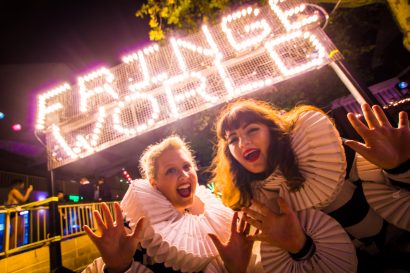It’s one thing to buy locally designed clothes… but what about locally designed fabric? Nina Levy did some digging and discovered a plethora of textile designers working right here in WA.
Local threads
18 April 2022
- Reading time • 10 minutesVisual Art
More like this
- A walk with Tina Stefanou
- A blaze of glorious people
- Diving into the gothic world of Erin Coates
As a long-time sewist, I’ve always been interested in textiles. But most of the fabric I buy is either designed in the Eastern States or overseas.
I started wondering… are there fabric designers in Western Australia?
The answer is yes. A little research revealed fabric designers around the state, from those who design textiles to sell to other makers, to those who design specifically for their own fashion labels. I caught up with seven of them.
Megan Salmon
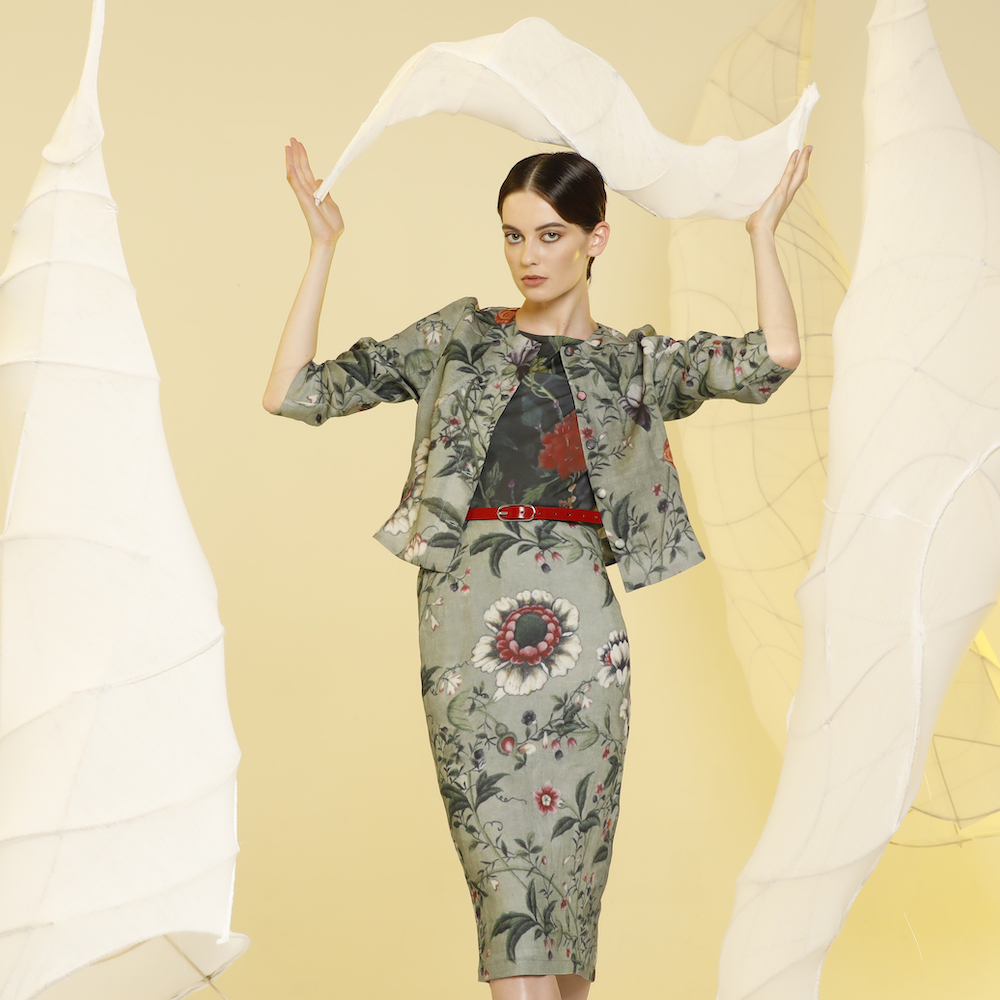
Based in Fremantle, Megan Salmon has been designing clothes since 2000, but her interest in making and styling clothes dates back to childhood, when her mother taught her to sew.
Although she studied fine art at university and was a practising artist in her 20s, her interest in fashion won out. She says, “One day I just decided to swap over into designing clothes full time and I have never looked back!”
That training in fine art has shaped her as a maker, however. “I don’t follow trends as such,” she says. “Instead I refer to my interests in art, music, literature and architecture to inspire me and I follow a process of researching and experimenting that I learnt from practising art in the studio for ten years.”
Fabric is central to Salmon’s process, and almost comes first in terms of design, she says. So it’s no surprise to learn that she creates new fabric patterns every season.
“I get a great deal of inspiration [for my fabrics] from the natural world,” she says.” I love going to natural history museums as much as art galleries for inspiration. I like playing with scale on the body – creating very large scale representational designs that become abstract because they are so big, playing with rhythms with mark making, and playing with colour – highly saturated or desaturated. And I love repetition.”
You can find Megan Salmon’s label at her retail store, 55 Queen Victoria Street, Fremantle or online.
Ku’arlu Mangga

Meaning “Good Nest” in Nhanda, Ku’arlu Mangga is an Aboriginal art centre in Moonimia (Northampton), on Yamatji Country.
Led by senior Nhanda/Naaguja artists, Ku’arlu Mangga is a social enterprise, assisting local Aboriginal Artists to achieve their artistic and economic potential.
“For many people here, the strong connection to country is on Murchison River, near Kalbarri, 100km North,” says Colleen Drage, founding artist, cultural director and co-CEO of Ku’arlu Mangga.
“Our art centre helps people physically connect with the place and express their connections in their artworks across different media, including, painting, printmaking and carving.”
“We launched our textile range in 2018 from original artworks by the foundation artists,” elaborates Annette Sellers, the arts centre’s co-ordinator and co-CEO. “The original designs connect to country such as the ‘River’ and ‘Quandong’ by Mauretta Drage (pictured right). Plants and animal designs reflect both cultural connection and good memories, such as ‘Desert Pea’ by Leanne Peck.”
Ku’arlu Mangga’s logo is taken from Colleen Drage’s print “Children Dancing in the Rain”, one of many prints she has created, says Sellers. “Colleen uses really strong colour, and repeats uncluttered design celebrating ‘simple memories’. Her triangle designs, for example, come from memories of people camping on the river, but are coloured with stratification in the Kalbarri gorges.”
Ku’arlu Mangga was badly affected by Tropical Cyclone Seroja but plans to re-open to the public in late May. In the meantime, you can support the artists by purchasing their textiles and other artworks at their online store.
Block D studios – Sheree Dornan

Multidisciplinary artist Sheree Dornan, of Block D Studios, expanded her practice to encompass fashion and textile design when she left her “day job” lecturing in building design and architectural design.
“I decided to explore the possibility of printing my artwork onto fabric through a digital process for my garment designs,” she recalls.
Dornan’s interest in garment design began much earlier though; she’d been drafting her own patterns since she was a school girl.
“I was given a sewing machine when I was 10 so learnt to sew then and the finer techniques at high school during home economics,” she says. “At first I’d use newspaper to draft makeshift patterns and would whip up simple outfits on my machine.”
Dornan says her textile designs come from an organic place. “My designs are influenced by the every day, different cultures, objects and surroundings, and particularly the colours of the natural world.
“There is very much a crossover of my art practice into garment and textile design. For example, a series of small paintings from a collection titled ‘New Horizons’ became a digital print combined with hand-dyed silks for a runway collection of the same name. I also create large-scale painted and dyed sculptural textile artwork for exhibitions and commercial and residential clients.”
Dornan says one of the highlights of her career was designing and making a hand-dyed printed costume for Black Swan State Theatre Company’s production of Dinner.
Dornan designs fabrics exclusively for her garment designs which are available from BlockD Studios, 4/89 Norma Road Myaree, by appointment.
Waringarri Aboriginal Arts
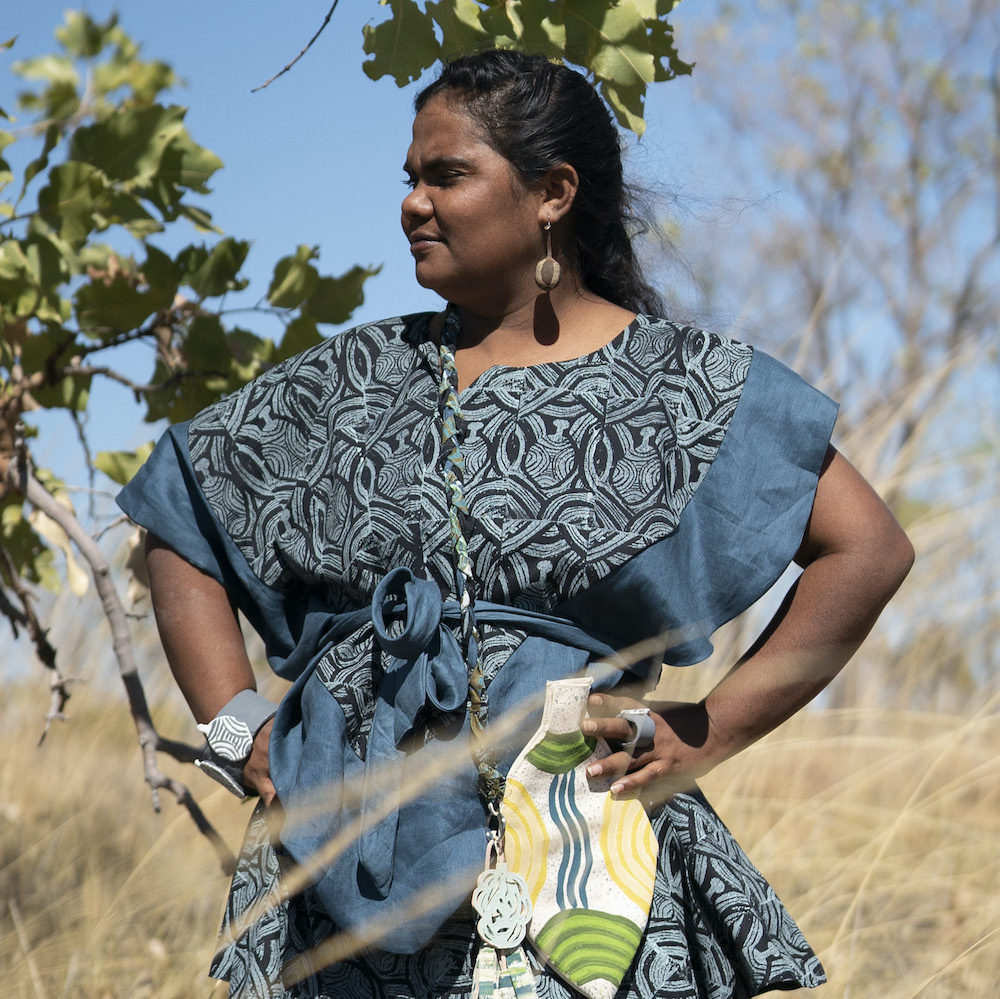
The oldest Aboriginal Arts Centre in WA, Waringarri Aboriginal Arts is renowned for its textiles, printed by artists who are also mostly young mothers from the local Miriwoong and Gajirrabeng language groups, as well as some from neighbouring language groups. The centre is located in Kununurra.
Inspired by traditional bush plant knowledge, Waringarri’s textile artists create lino-cut stamps which they use to hand block prints onto linens and fine cottons. Different artists are associated with specific plants, leaves or fruits, explains Gallery Co-ordinator Leana Collier.
“For example, Delany Griffiths [pictured] prints gerdewoon (boab nut) from the iconic Kimberley boab tree … Anita Churchill [pictured top of story] prints mejerran (bush plum), a deliciously sweet fruit which can be made into a type of bush conserve.”
Established in the early 1980s by senior cultural leaders of the East Kimberley, Waringarri Aboriginal Arts exists to provide both employment and a means of passing on cultural knowledge from one generation to the next.
“Senior cultural elders teach younger artists about bush tucker, bush medicines and Country, enabling the development of unique motifs and designs as well as the transferring of traditional knowledge,” says Collier.
Keep your eyes peeled for Waringarri Aboriginal Arts’ new BOONKAJ Collection, says Colllier. “The BOONKAJ collection is a sophisticated suite of garments inspired by the beauty of bush plants and the dramatic colours of the Kimberley.”
You can find textiles and more at the Waringarri Aboriginal Arts online shop or you can visit the arts centre in Kununurra.
glytch

Based in North Fremantle, glytch is a family-run clothing label, headed by designer Mladen Milicich. Creating small runs of distinctive prints, the label makes a range of unisex shirts that are ethically produced with a relatively low environmental impact.
“glytch started in 2012,” says Milicich’s wife Janine Milicich. “Mladen had been working for many other designers and wanted to explore his own aesthetic using the technical skills he had.”
Initially glytch used prints from external designers, but once they discovered digital artwork, everything changed.
“In 2018 one of our daughters designed a ‘flowerhead’ motif and we began playing with fabric design ourselves,” says Milicich. “Once we started dabbling in our own design, we found it was a fun creative outlet.
“Designs are mixture of pencil and paper sketches and digital artwork. Creating our own designs also allows us to really think about the ‘glytch’ customer and play with our market. This play inspires our prints.”
The glytch team is conscious that the fashion industry is one of the world’s biggest polluters and do everything they can to minimise their own impact.
“We use natural fabrics and pigment ink dye,” says Milicich. “We package our goods in biodegradable material. We work with people in WA to produce our shirts locally … We have recently purchased a digital fabric printer and now we are producing our own fabric here in WA. We’re planning to print for other WA designers in the near future.”
You can shop glytch’s range on their website.
Melaleuca Rise
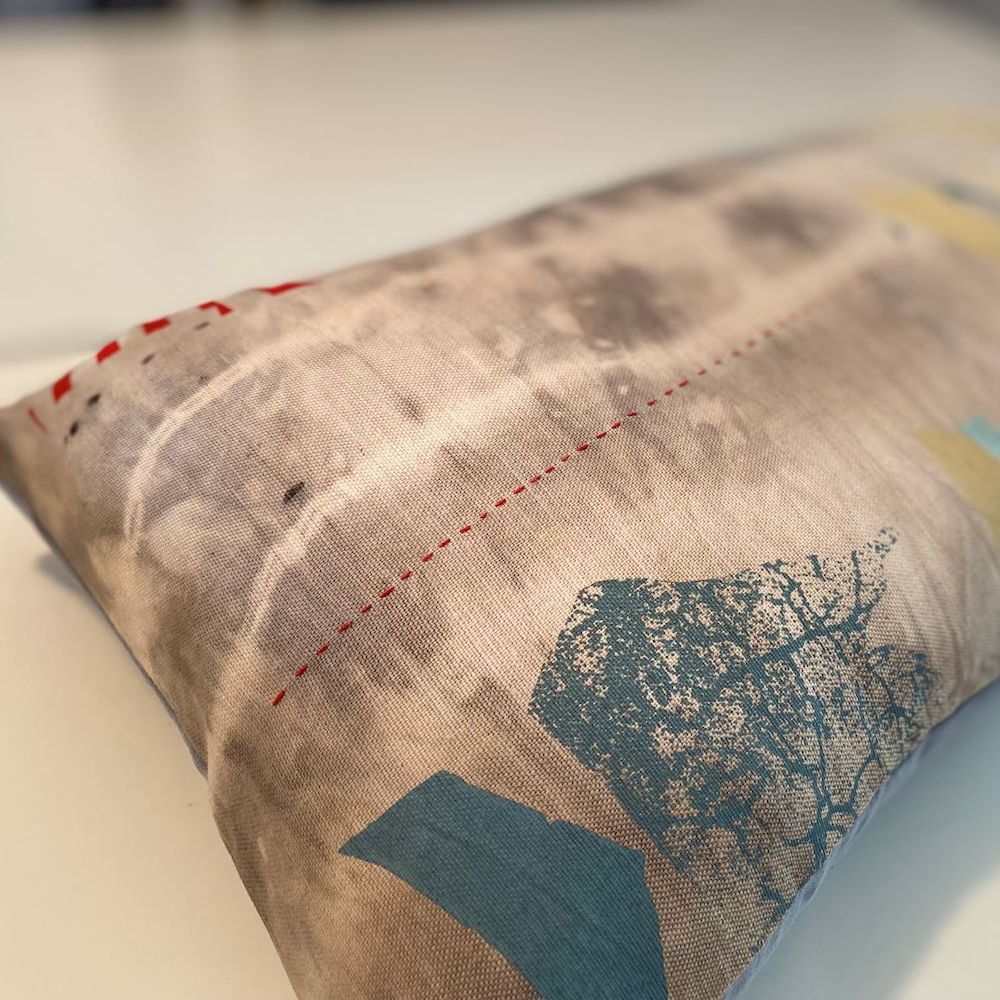
Jane Ziemons is the artist and designer behind Melaleuca Rise, a Perth-based label that creates bespoke garments.
Designing clothing is just one aspect of Ziemons’ practice as an interdisciplinary artist, so perhaps it’s no surprise that her garments have a sculptural quality. “The narrative textile, the story of the cloth, is at the core of my practice and so every collection begins with the story that I want to tell,” says Ziemons.
“For me [the inspiration for fabric designs] starts when I begin to explore a curiosity, a happening or a distant memory and then over time there begins a dialogue between me and the work itself and that determines what needs to be done to develop the textile design.
“That might be using multiple layers of screen-printed images, re-appreciating an embroidered tablecloth into a coat sleeve or hand stitching text into an installation piece. I rarely have any idea what the result will be right up until the work is ready to be exhibited.
Care for the world and its people is also central to Ziemon’s practice, she says.
“From teaching migrant and refugee women to become seamstresses in the program I developed with Loop Upcycling, to the meticulous care and attention to detail when creating bespoke pieces for individual clients, I hold a deep longing to make connections between cloth, people and place.”
You can make an appointment to view Ziemons’ garments by appointment – head to the Melaleuca Rise website for details.
Warlayirti Artists
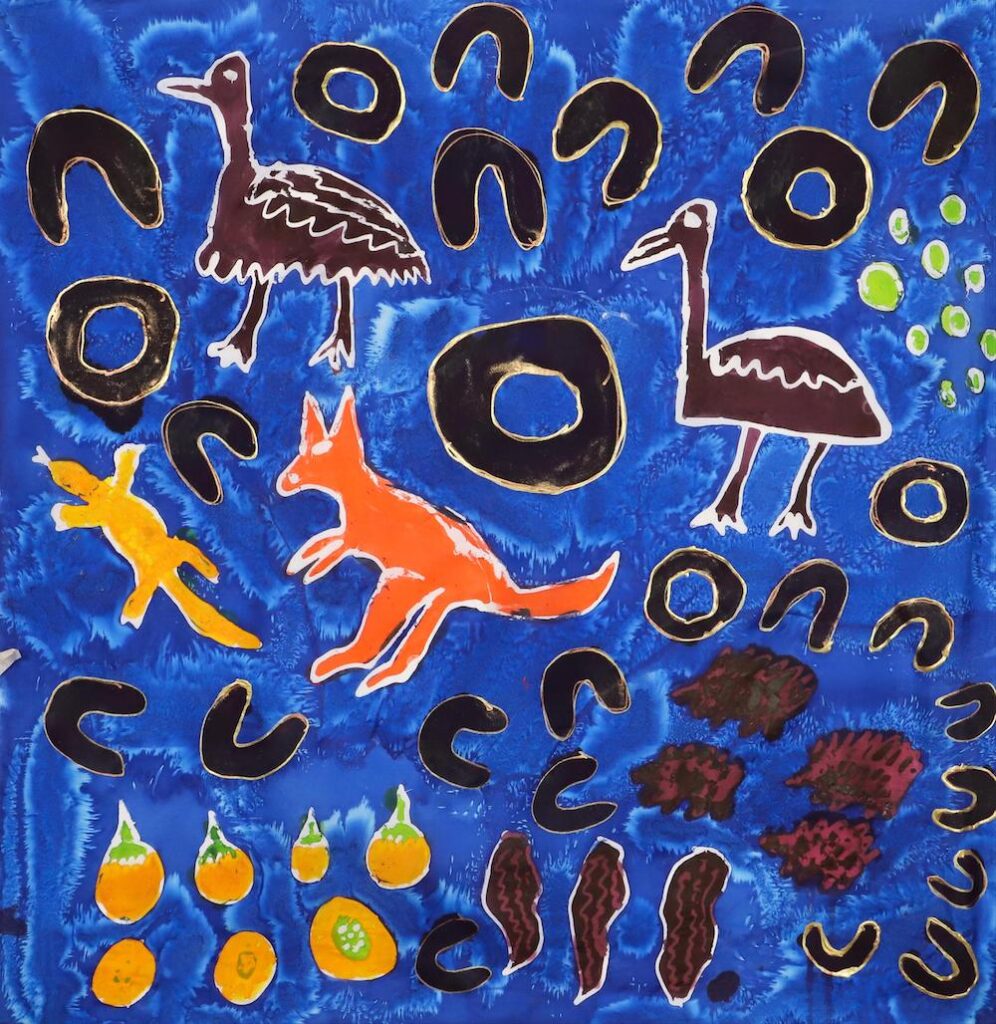
Known for vibrant colour and bold brush stokes, Warlayirti Artists is an Aboriginal Arts Centre that produces dyed silk scarves in addition to its paintings, paper works, prints and glass works.
Located in the community of Wirrimanu (Balgo) in the south east Kimberley, in the Kutjungka region of northern WA, Warlayirti Artists represents makers from three communities in that region – Kururrungka (Billiluna), Mulan and Wirramanu (Balgo) – and eight language groups: Kukatja, Ngardi, Djaru, Warlpiri, Walmajarri, Wangkajunga, Pintupi and Manyjiljarra.
“The word ‘Warlayirti’ is the name of the marlpa (companion) dog of the luurnpa tjukurrpa or Kingfisher Dreaming,” explains Poppy Lever, manager of Warlayirti Artists. “Wirrimanu/Balgo sits along this songline and it is this shared songline which connects the eight tribal/language groups of Balgo.”
The silk scarves designed by Warlayirti artists are inspired by Country and culture. “In the scarf pictured, for example, Genevieve James has painted many types of bush tucker,” says Lever. “ Marlu (kangaroo), karlaya (emu) goanna (tjarrampayi) and tjilkamarta (echidna) as well as bush vegetables kanti (bush potato) and kumpupatja (bush tomatoes). People are sitting by waterholes and eating the bush tucker they’ve gathered.”
You can purchase silk scarves designed by Warlayirti Artists, as well as other artworks, from their online shop. Find out how to arrange a visit to Warlayirti Artists arts centre here.
Pictured top: Anita Churchill of Waringarri Aboriginal Arts. Photo: Grace Lillian Lee and Chris Baker
Like what you're reading? Support Seesaw.



